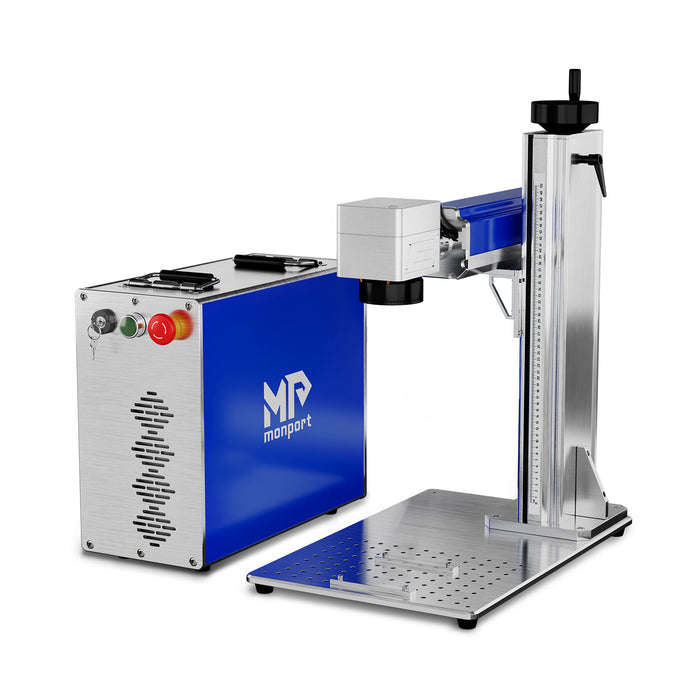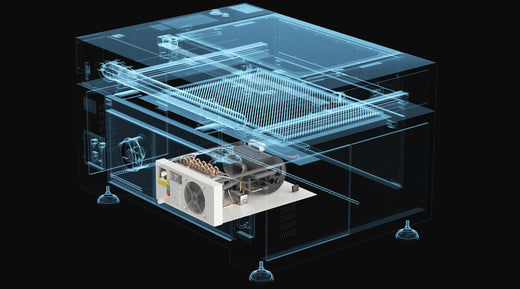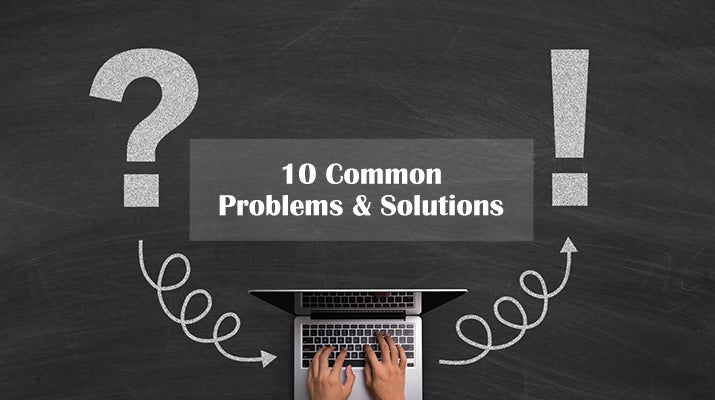Introduction
Wood, paper, cork, and some plastics and other materials can be cut with a laser engraving machine. It can also be laser engraved on wood, cardboard, aluminum, stainless steel, plastic, marble, stone, ceramic tile, and glass. Some materials, however, should not be laser cut and engrave. Not only will these materials produce a large number of harmful substances that will harm your body during the laser engraving process, but their flammability will cause fires and other safety accidents, endangering your safety and damaging your equipment. Furthermore, the cutting effect of these materials is not ideal. To ensure safe and effective use of your woodworking engraving machine, it’s crucial to know which materials are unsuitable for laser cutting and engraving.

Materials you should not process with a laser
- PVC / VINYL / LEATHER / ARTIFICIAL LEATHER
A woodworking engraving machine will emit pure chlorine gas when cutting PVC, artificial leather, and similar materials. This gas is harmful to human health and can damage the machine's optical and motion control systems. Therefore, PVC is better suited for traditional mechanical cutting methods. These are not suitable CO2 laser materials due to the toxic gas emissions.

- ABS
Normally, a laser beam is hot enough to evaporate a lot of material. But it doesn't support materials like ABS and HDPE. Because they tend to melt rather than evaporate, leaving messy worktables and poor-quality cuts. At the same time, laser cutting ABS will release cyanide gas, which is a colorless toxic gas, poisoning can lead to hypoxia asphyxia. In addition, ABS is not easy to cut but is prone to fire. It tends to melt rather than vaporize; in addition, it tends to leave behind molten viscous deposits that are difficult to clean. ABS is another incredibly durable, impact-resistant thermoplastic, which is why it's often used for things we don't want to break, such as computer parts, medical supplies, auto parts, and protective caps. However, it is not among the recommended CO2 laser materials due to these risks.
- Thick Polycarbonate/Lexan
Using a woodworking engraving machine to cut thick polycarbonate is inefficient and dangerous. While it can cut thin polycarbonate up to 1 mm, thicker materials result in discoloration, smoke, and potential damage to the machine.

- Fiberglass
Fiberglass is a mixture of glass and epoxy resin. Glass itself is notoriously difficult to cut. Use epoxy, which is more likely to produce toxic fumes. Carvers must pay attention to protect their own safety as far as possible, do not make themselves inhale these toxic gases, which is a nightmare. In addition to this glass fiber, there is also a coating carbon dimension that cannot be cut. Fiberglass is not considered a safe CO2 laser material due to these issues.

The material is supported by viscose fiber
If these materials are rubber-backed, do not use a laser cutter to cut them. The glue evaporates and forms a coating on the lens. Then, the coating is covered on the lens, which will break when heated. The residual glue is worse than the resin. If it is not removed, it will damage the lens. Therefore, when carving, we must pay attention to the inspection of the material and not take risks. Materials such as thin wood laminates and acrylic tiles can be laser cut, but if they already have a layer of glue, they will become unsuitable for laser cutting. The peel-off backing at the bottom facilitates installation. This backing will evaporate to form a coating on the lens, which will heat, cloud, or break the lens. Residual glue is more dangerous than resin. Any attempt to remove it may damage the lens. These are not recommended CO2 laser materials because of their negative effects on the machine.
- HDPE/foam polystyrene/polypropylene foam
These three materials are highly flammable. Laser-cut HDPE quickly catches fire, melts, and becomes sticky and difficult to handle. And styrofoam is the most flammable material, which can easily cause laser fires. The molten polypropylene foam droplets continue to burn, turning into hard droplets and pebbles. High-density polyethylene (HDPE) is an extremely versatile thermoplastic polymer used in almost everything from milk jugs, shampoo bottles, bleach bottles, cutting boards, and pipes. However, because HDPE is made from petroleum, it is highly flammable and releases toxic gases when processed at high temperatures. Not only is trying to laser cut HDPE dangerous, but it can also be a very frustrating experience - in layman's terms, whatever you try to cut will turn into a big, slimy mess! This material is not among the suitable CO2 laser materials due to safety concerns.
FAQs
-
What materials can Monport laser machines handle?
Monport lasers work on wood, acrylic, metal, leather, glass, and more—ideal for versatile engraving and cutting. -
What are the benefits of Monport CO₂ laser engravers?
They offer high precision, large work areas, and powerful cutting ability, perfect for creators and small businesses. -
Why choose a Monport fiber laser?
Monport fiber lasers are built for speed and accuracy, making them excellent for metal engraving and industrial use. -
Are Monport machines beginner-friendly?
Yes, many models come pre-assembled or semi-assembled, with intuitive controls and tutorials for easy setup. -
What makes Monport stand out from competitors?
Monport offers affordable pricing, solid build quality, and great software compatibility—ideal for hobbyists and pros alike.
Final Thoughts
As we all know, fiber laser engraver can not cut wood, MDF, acrylic, rubber and other non-metallic materials, in addition, it is not recommended to cut aluminum, copper, aluminum and other rare metal materials for a long time. Brass. Because they are highly reflective materials. Because the laser wavelength is not within the ideal absorption range of these materials, the absorption effect is not good. And most of the energy is reflected back, easy to damage the laser head in front of the protective lens. It also increases consumption of consumables.By understanding the capabilities and restrictions of your woodworking engraving machine, you can ensure a safer and more efficient engraving process.
Unlock Big Savings at Monport Laser! Use code BESTMP10 at checkout for an exclusive discount – Click here to shop now!










